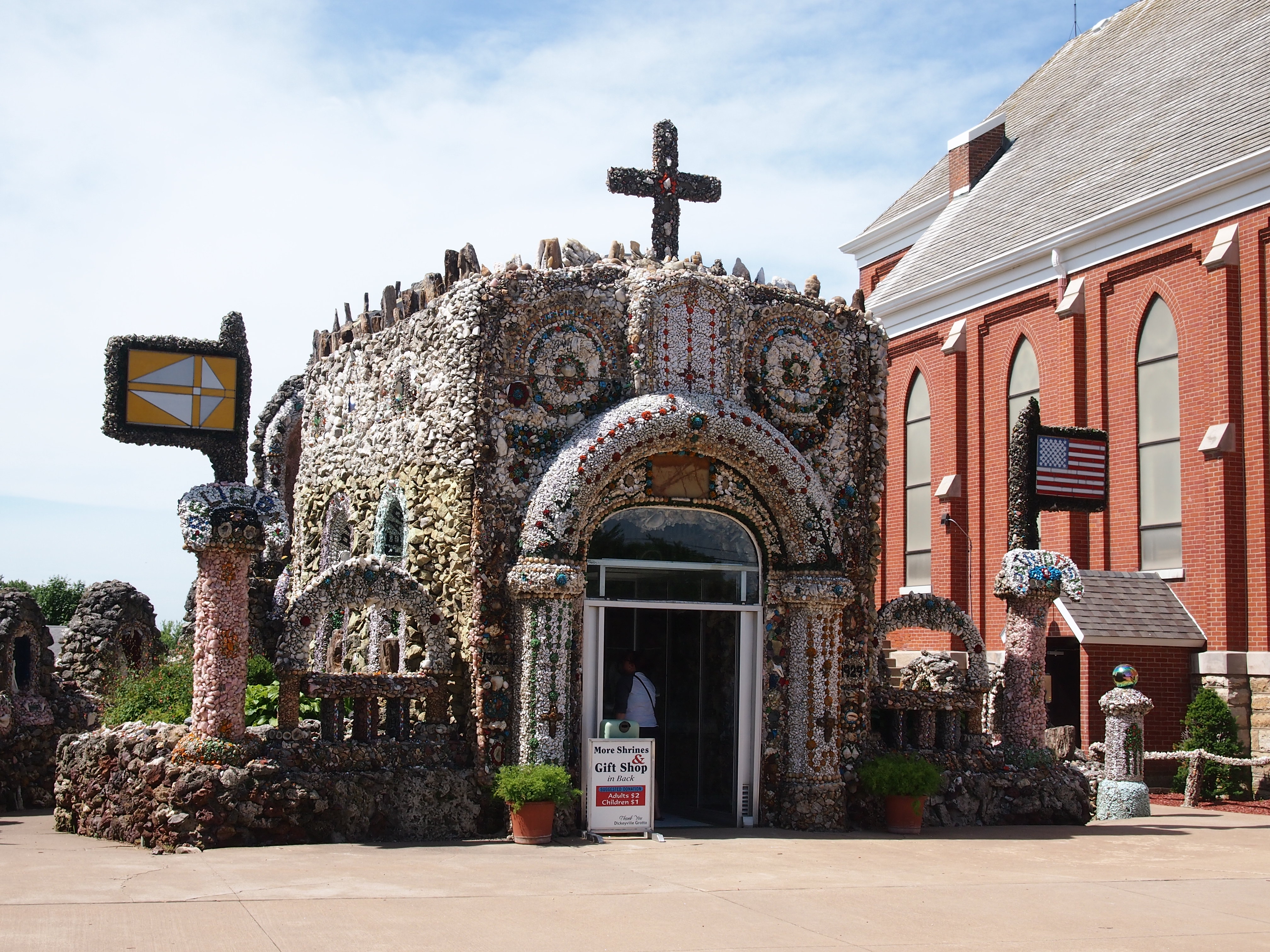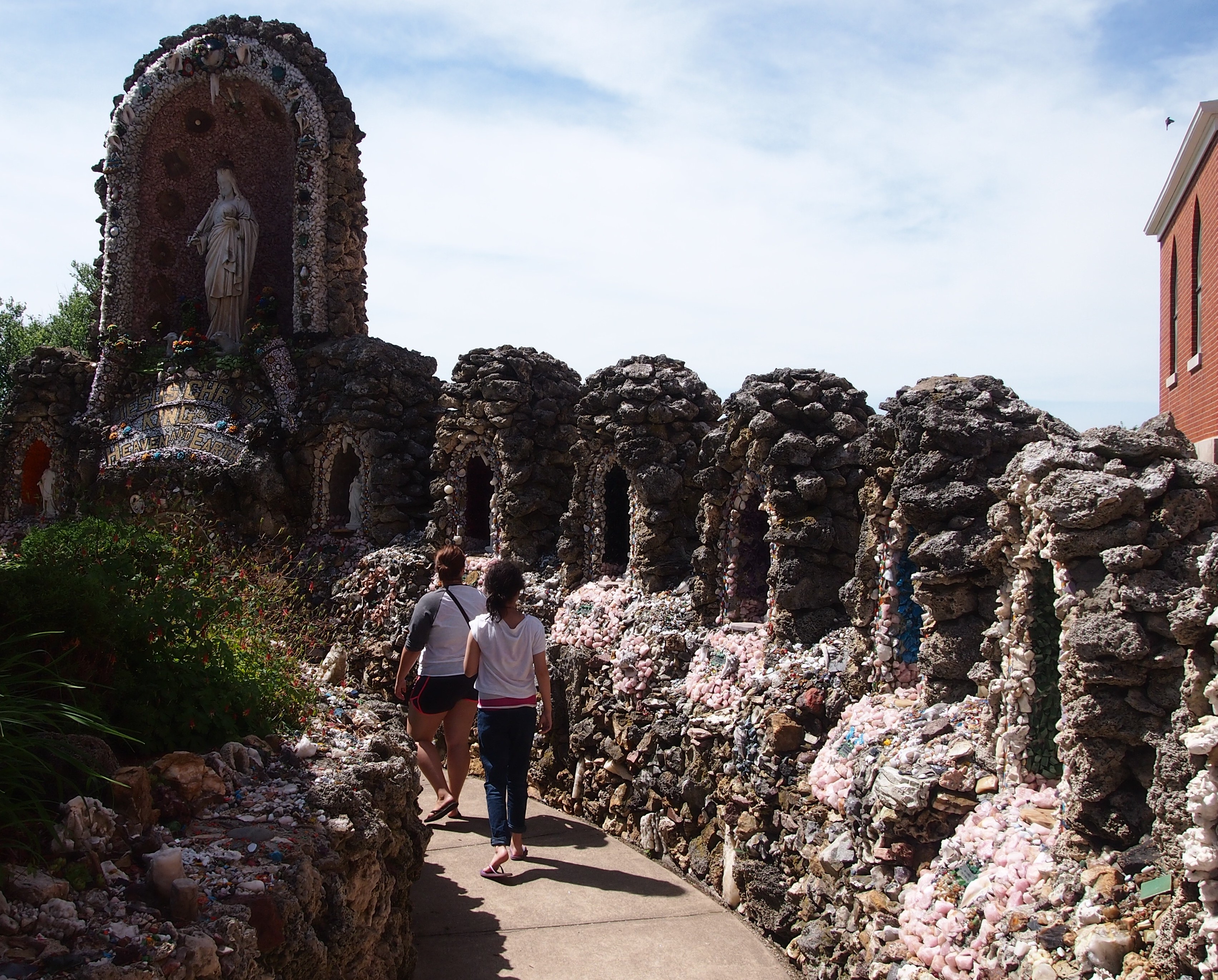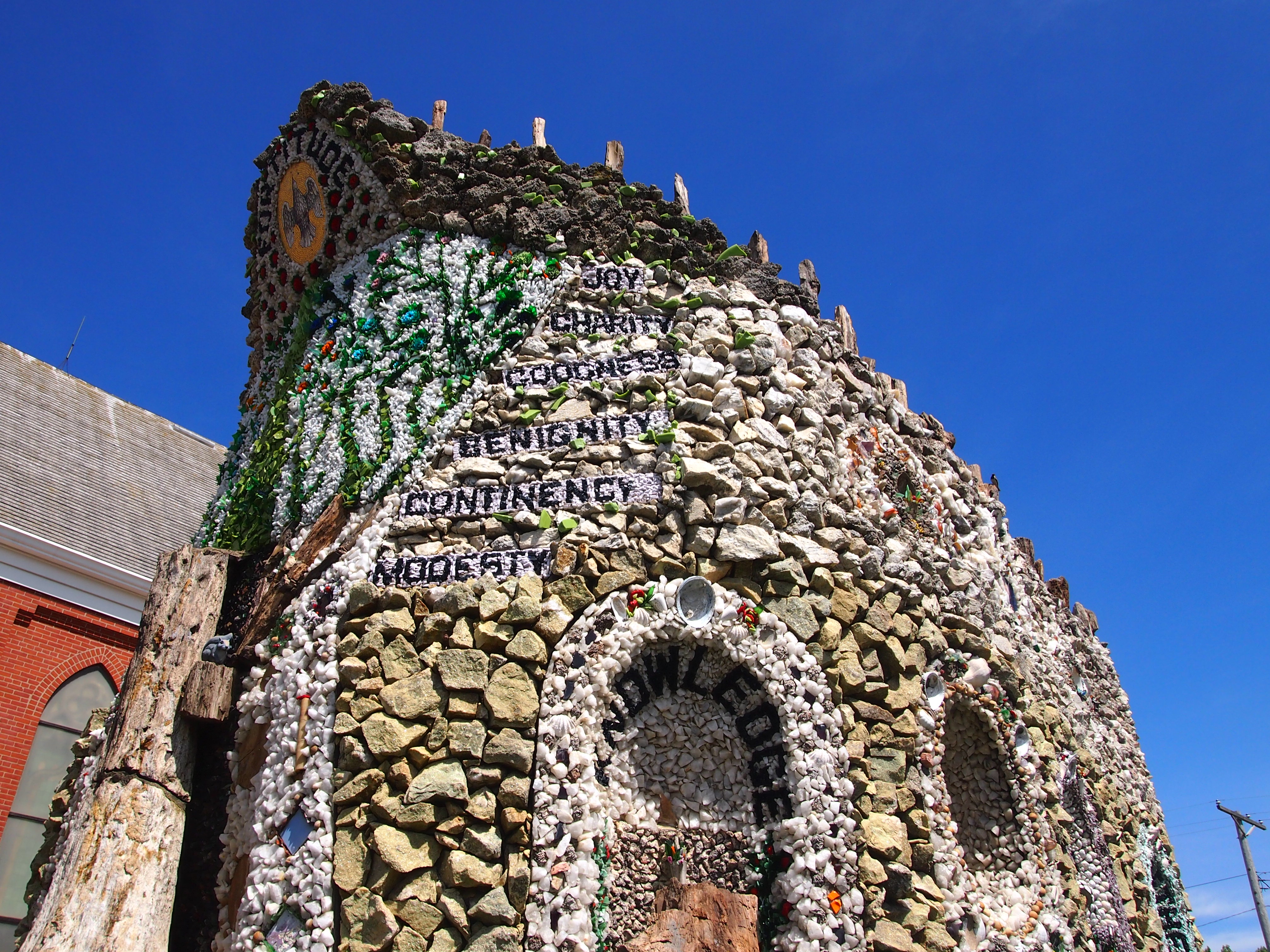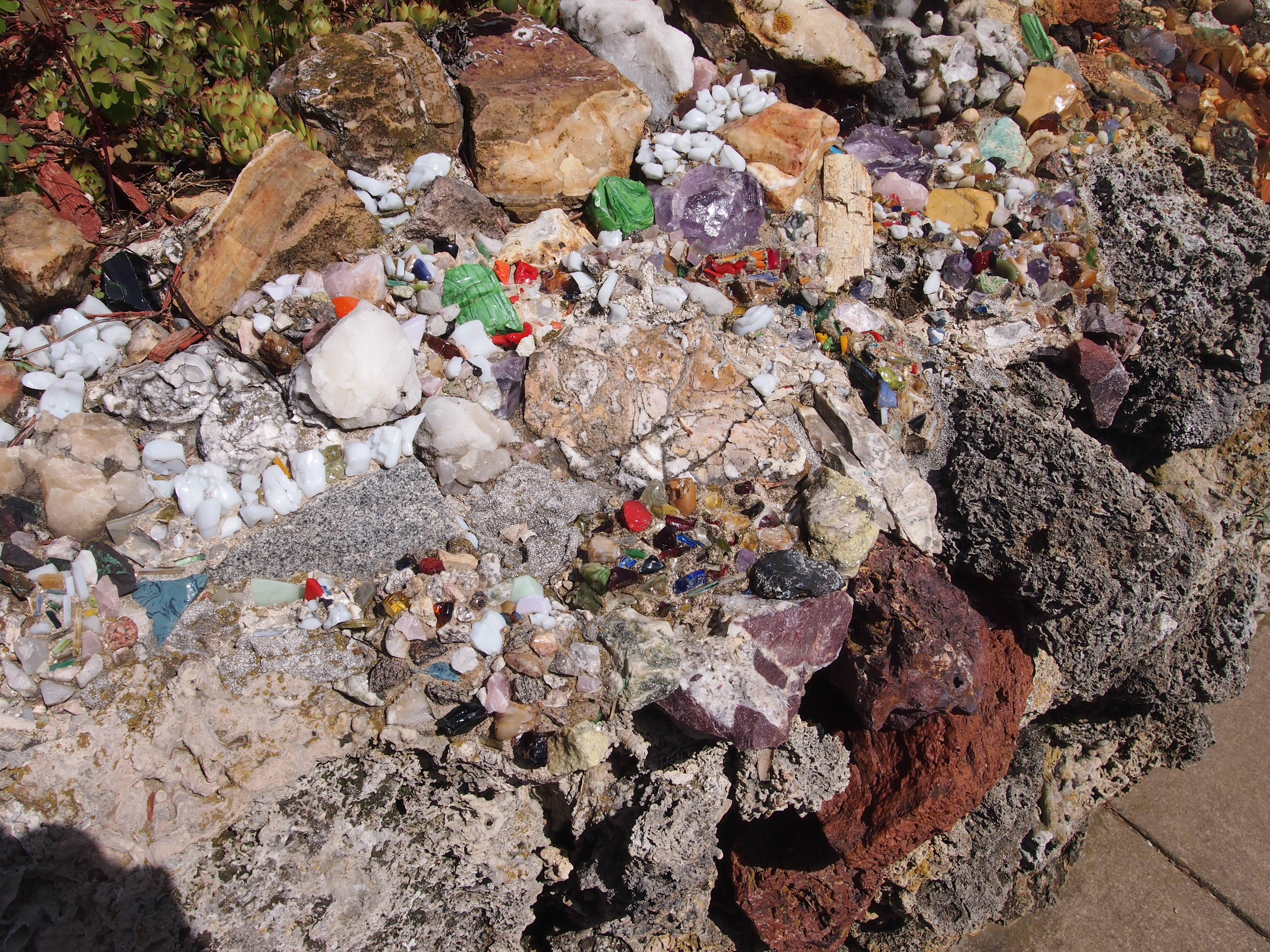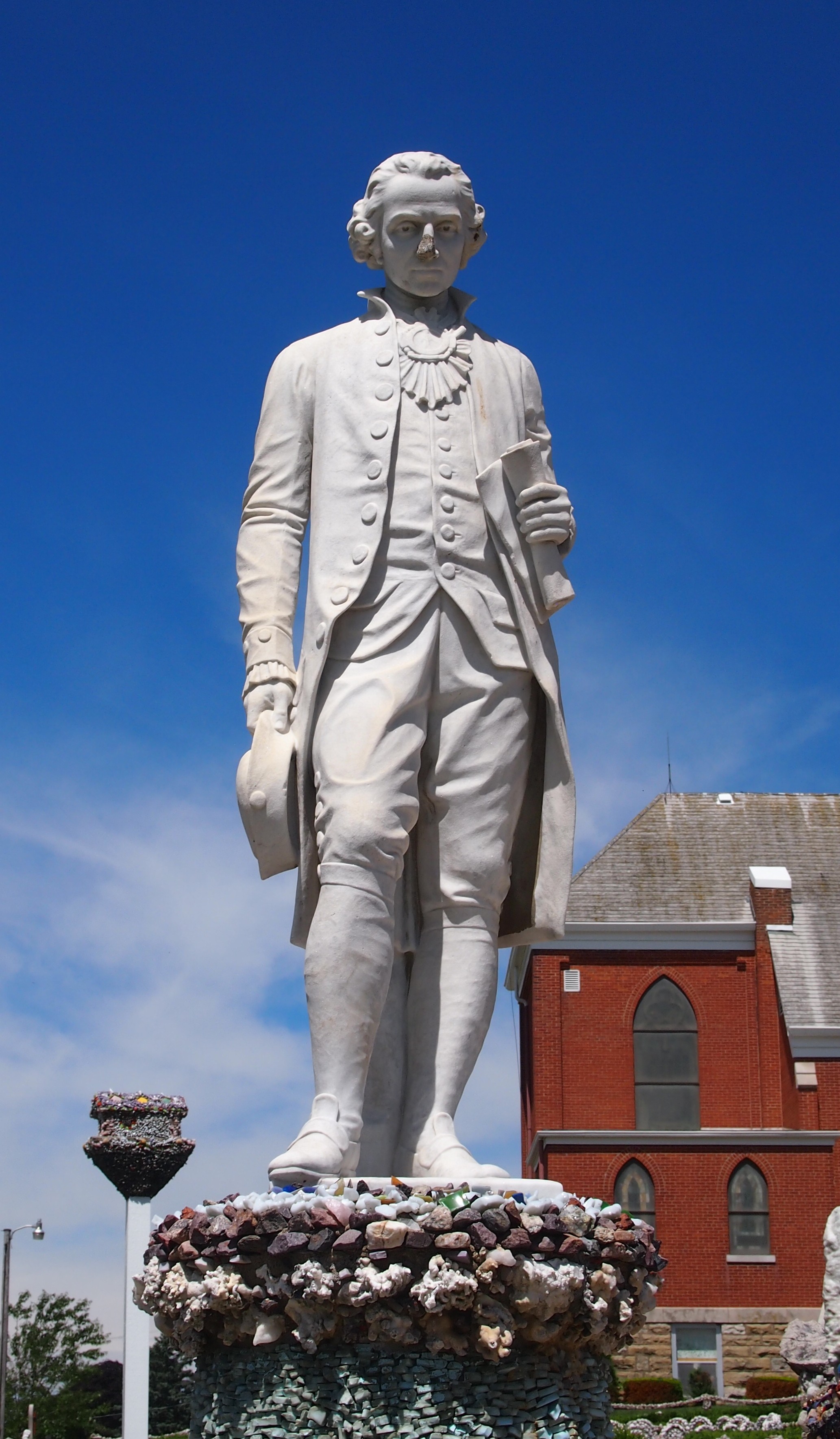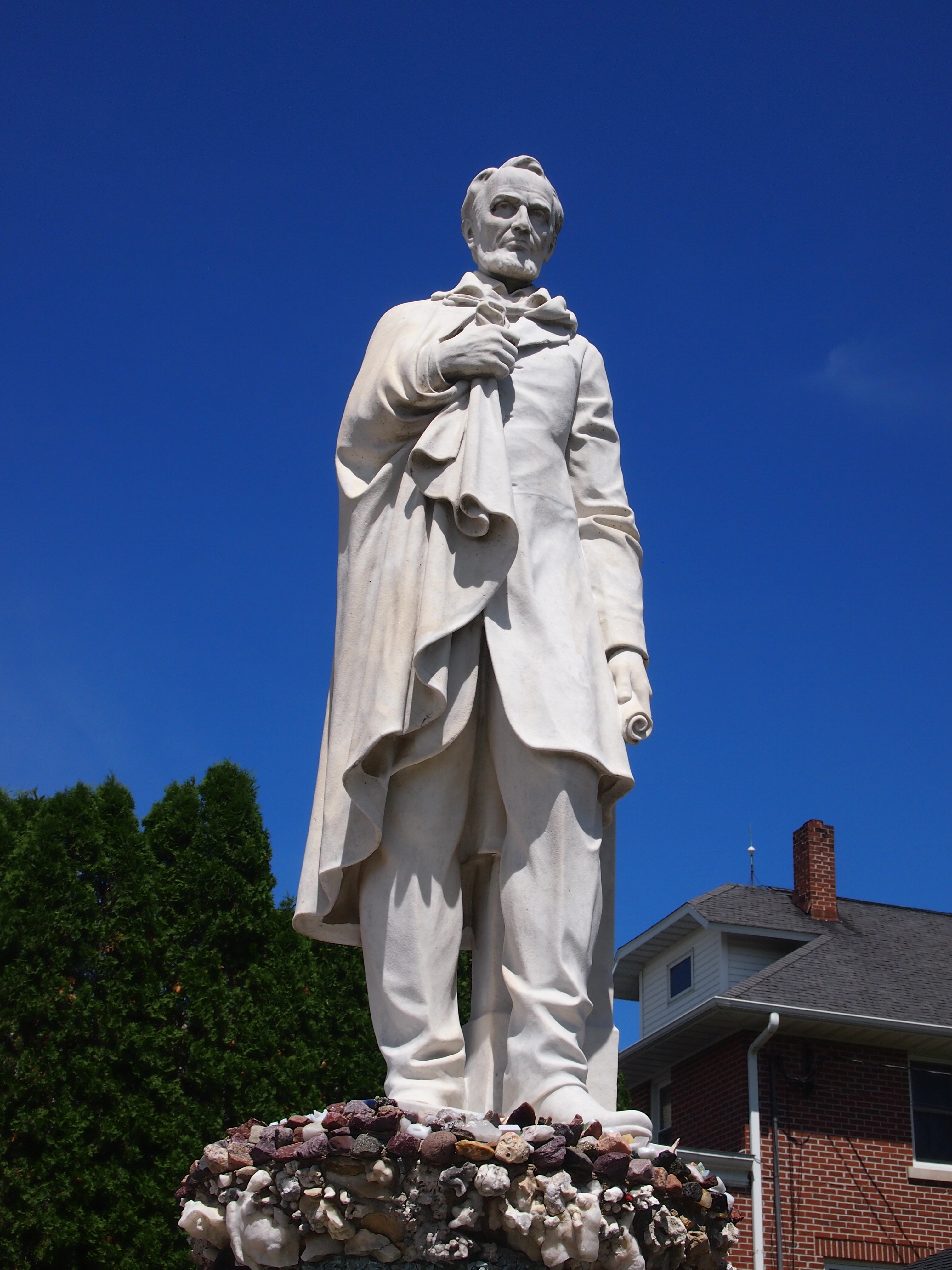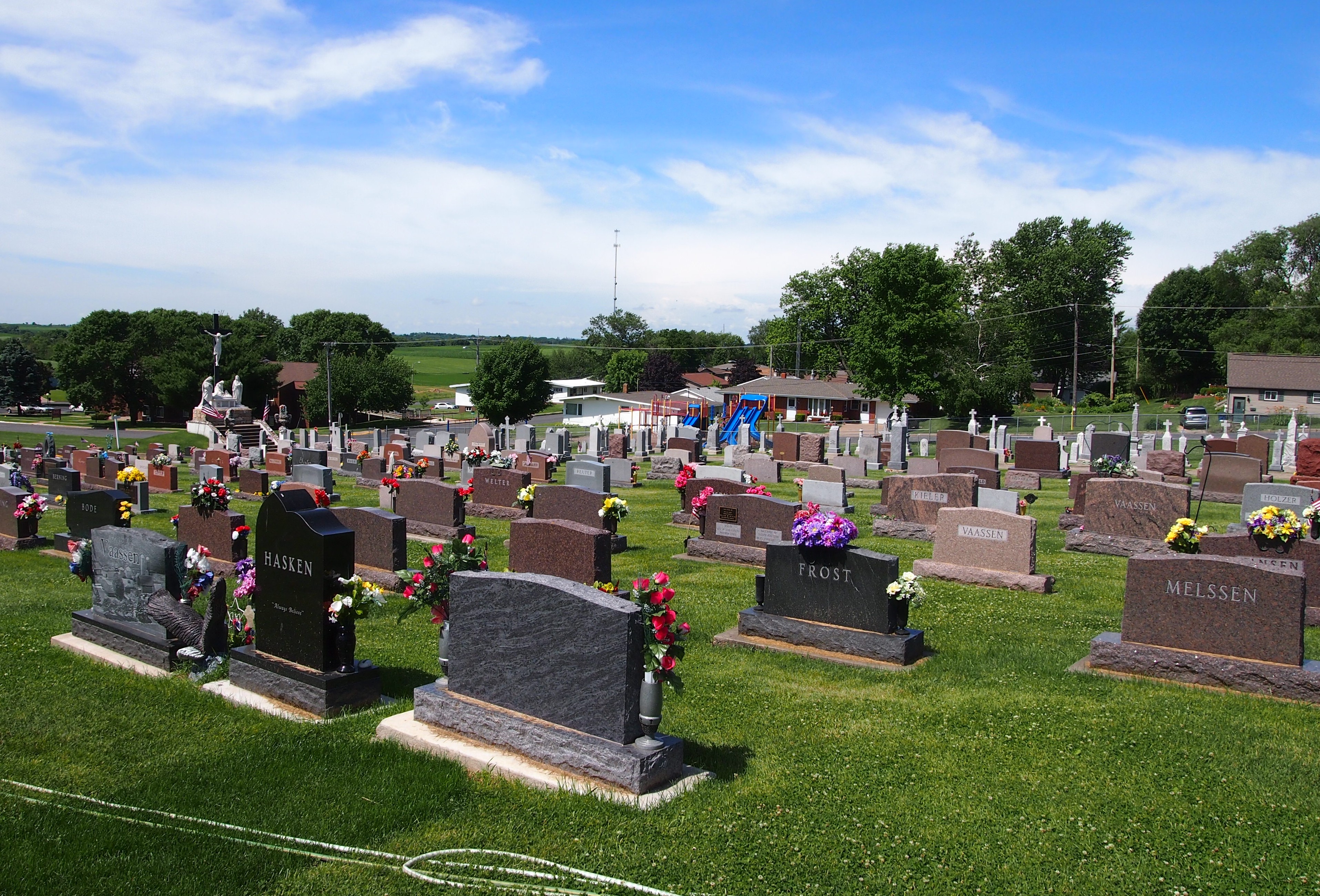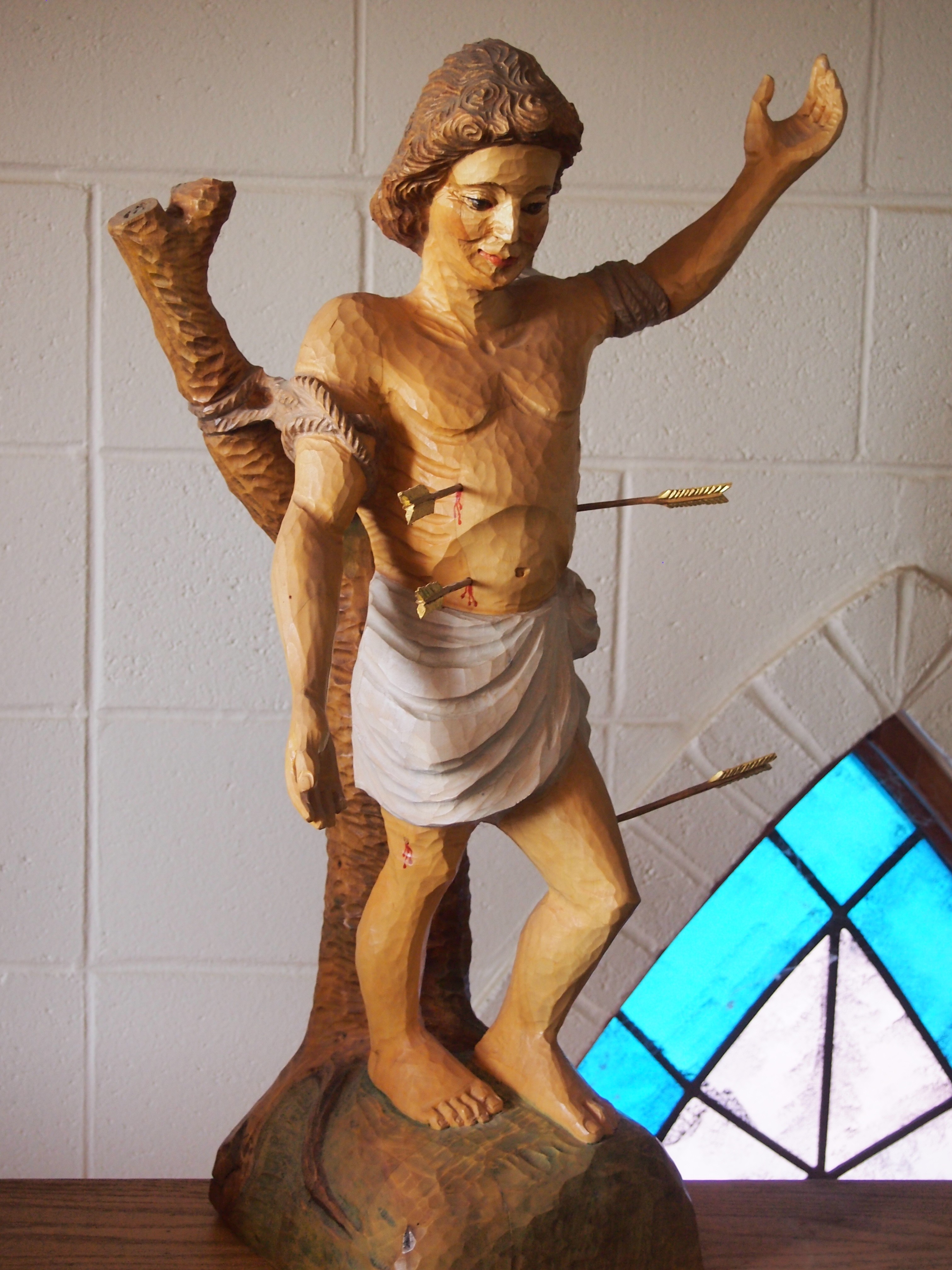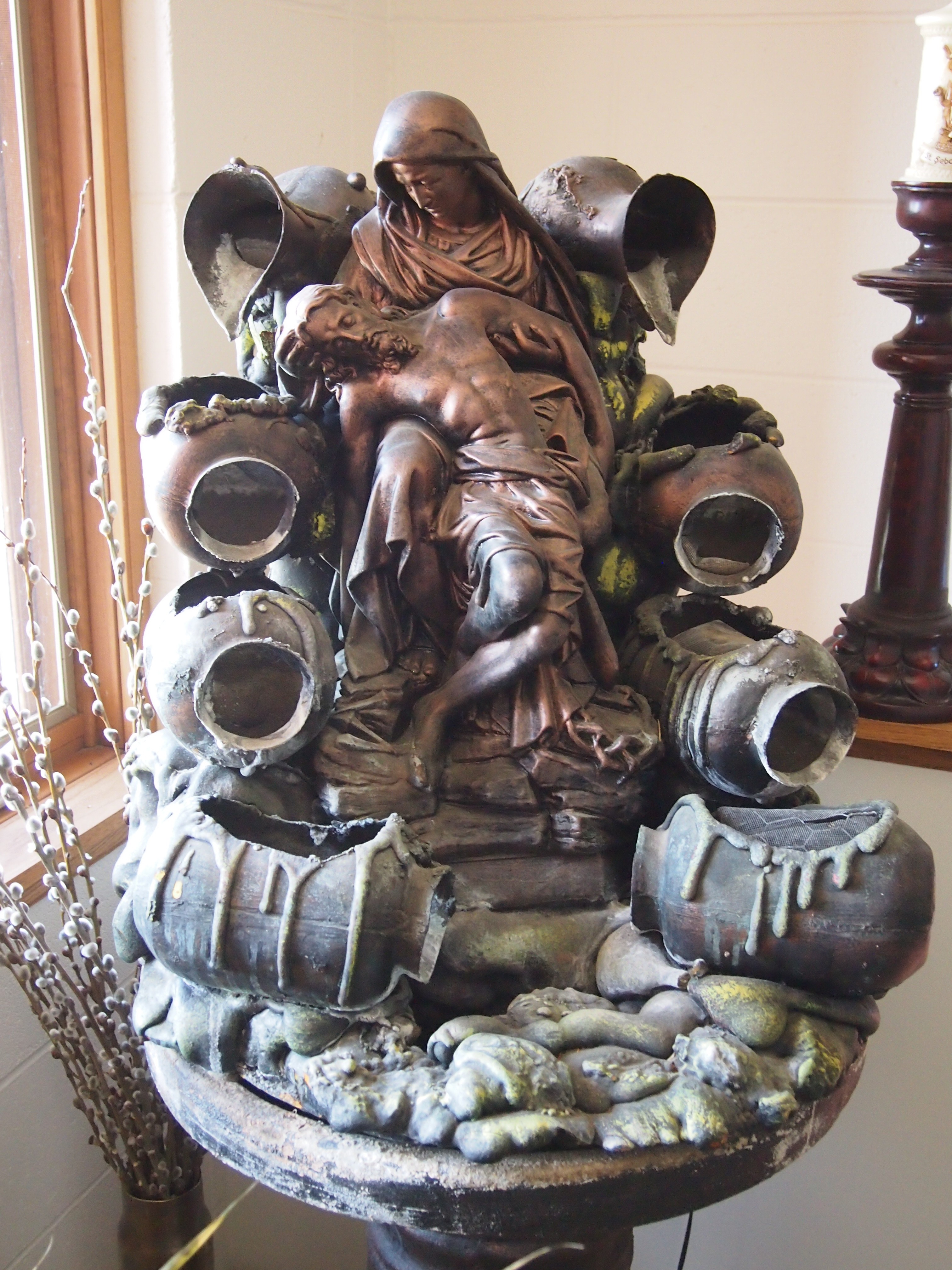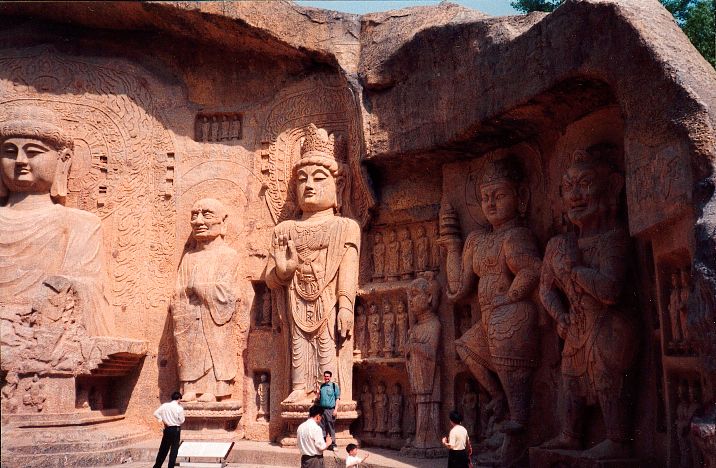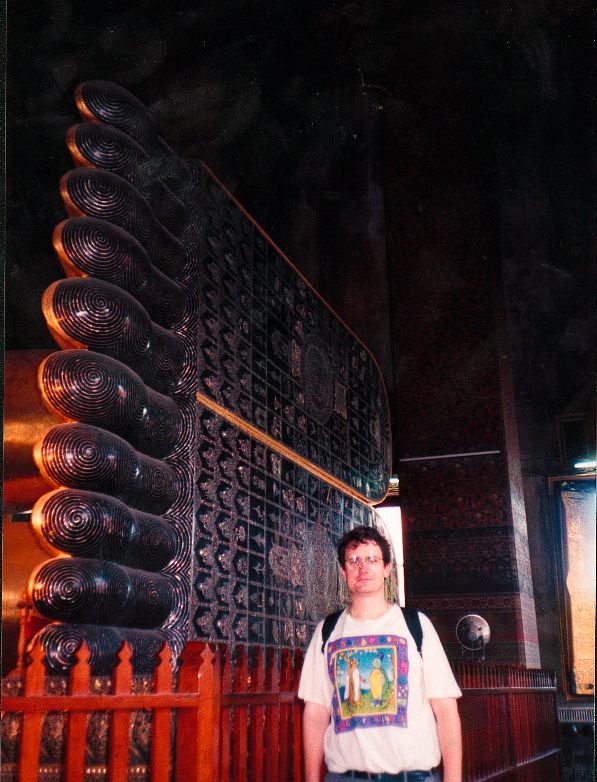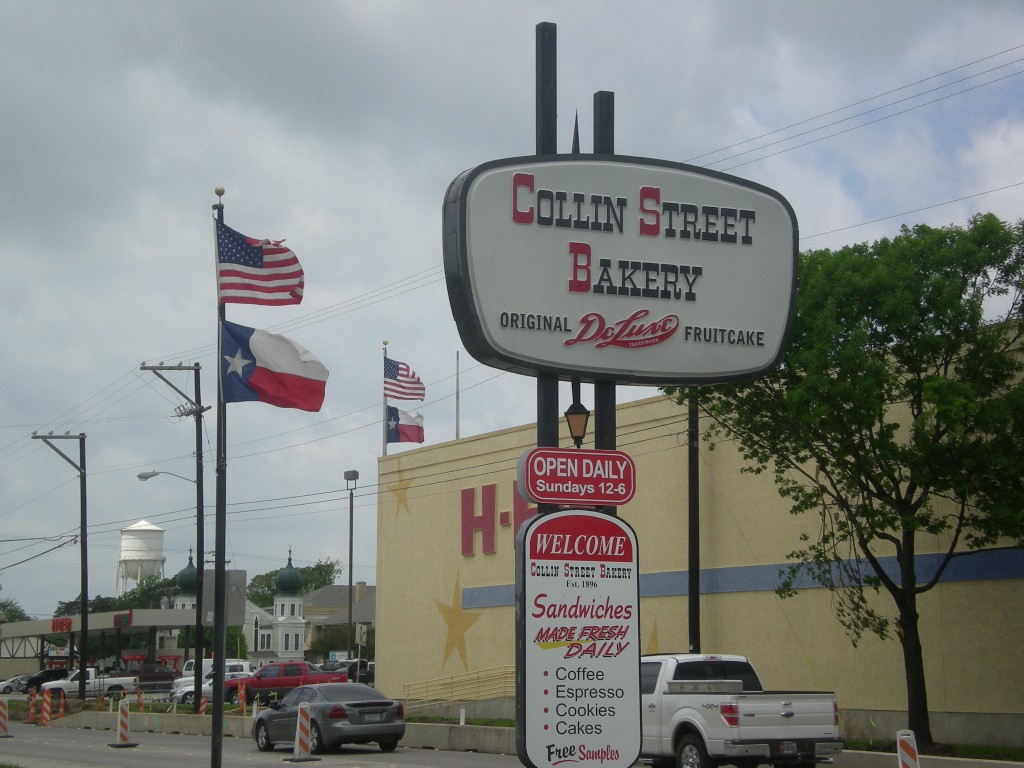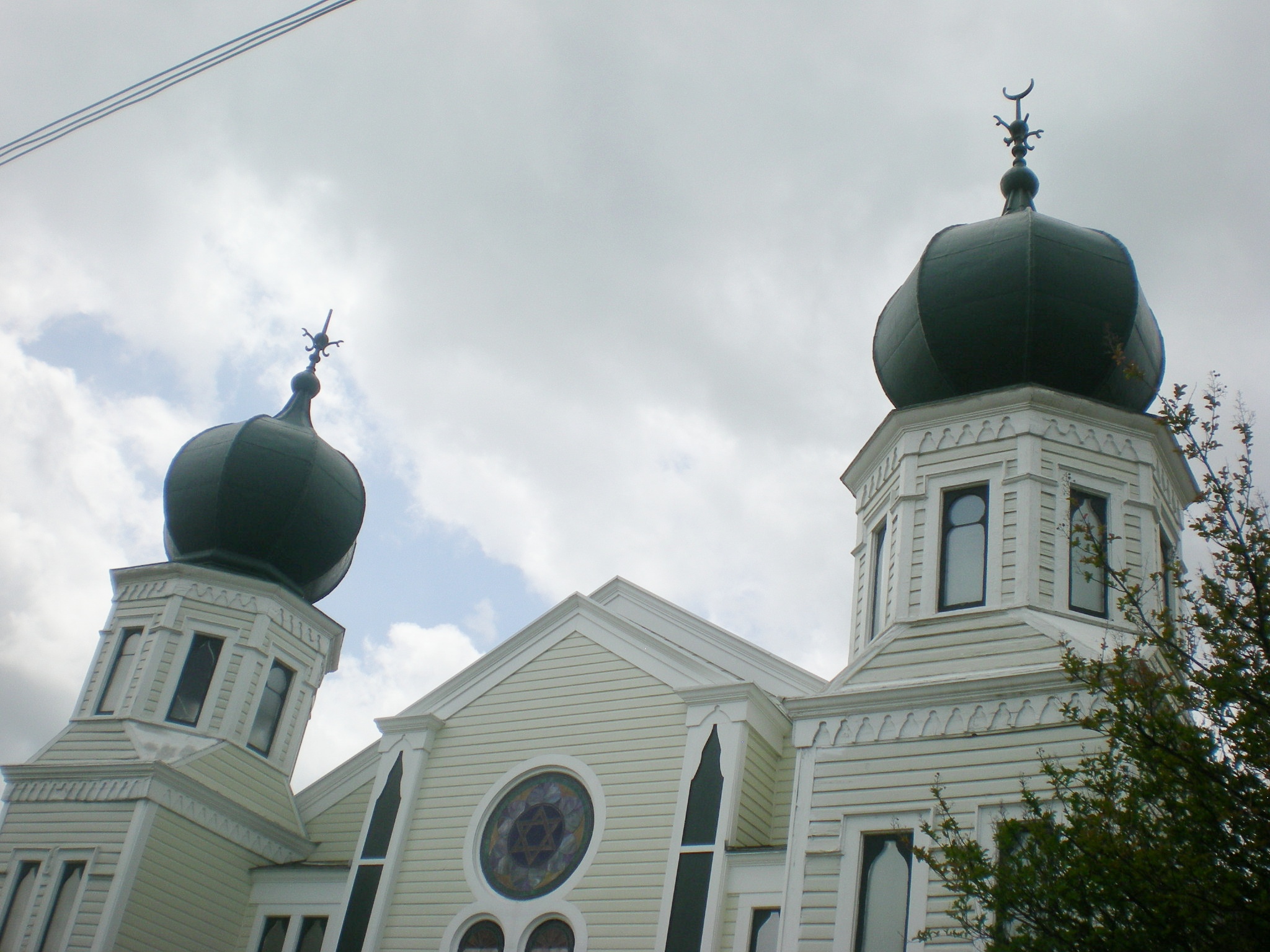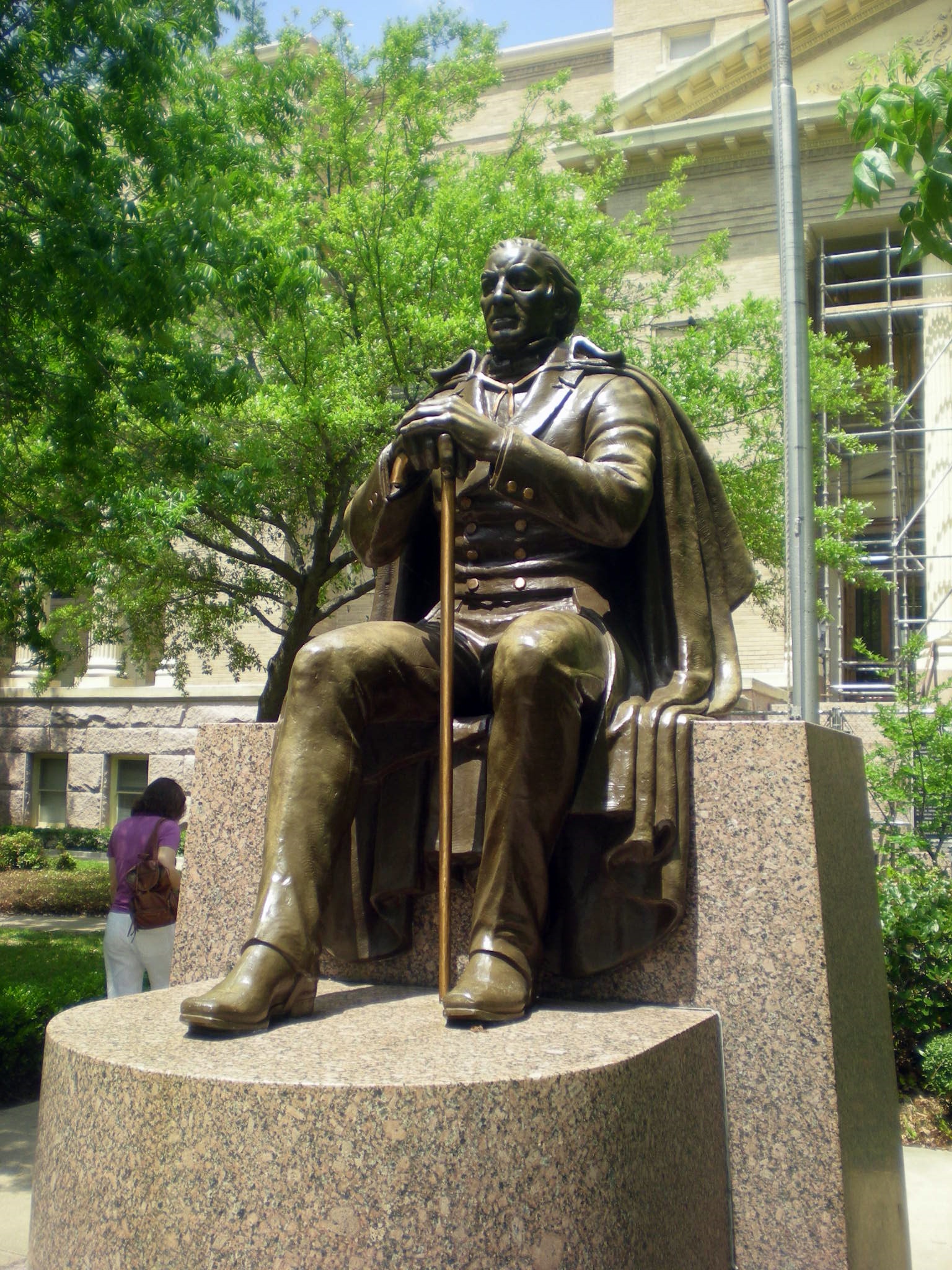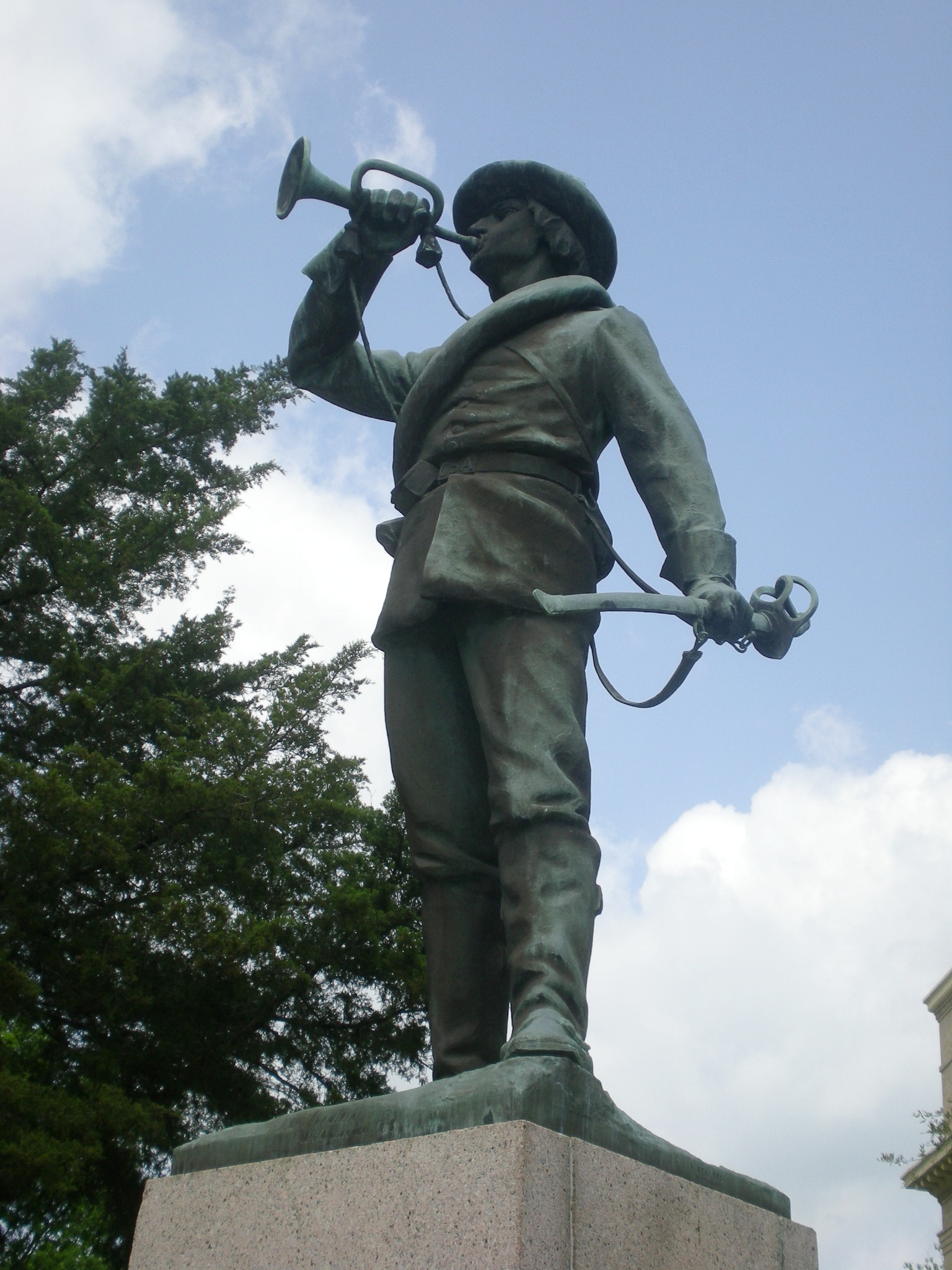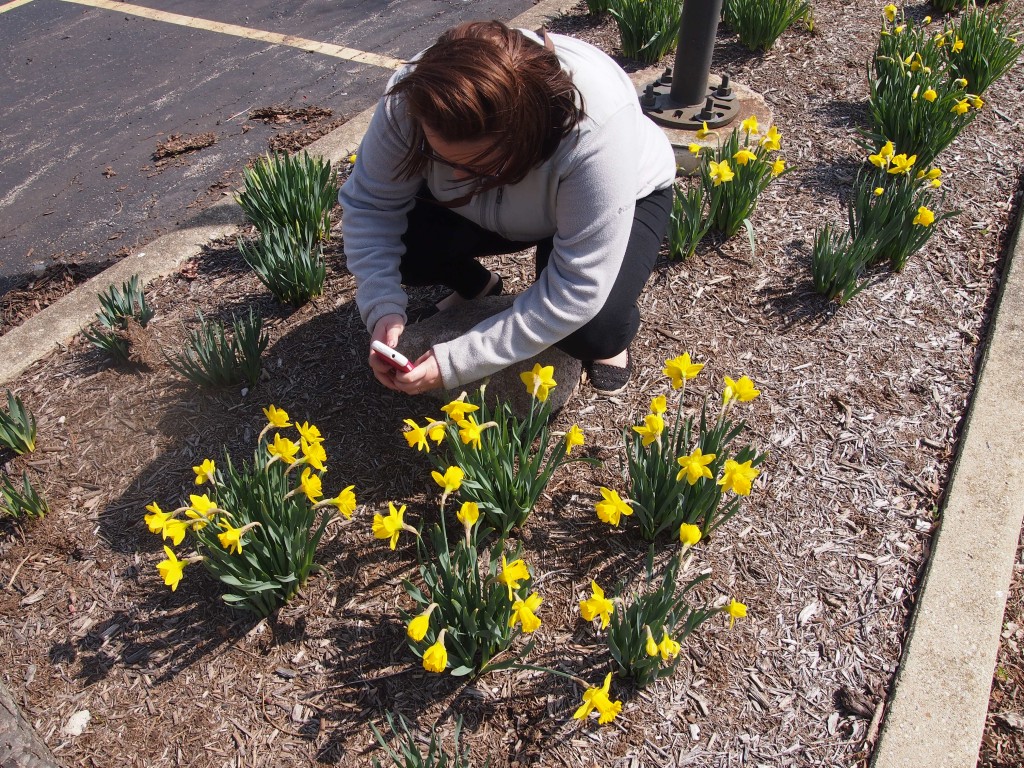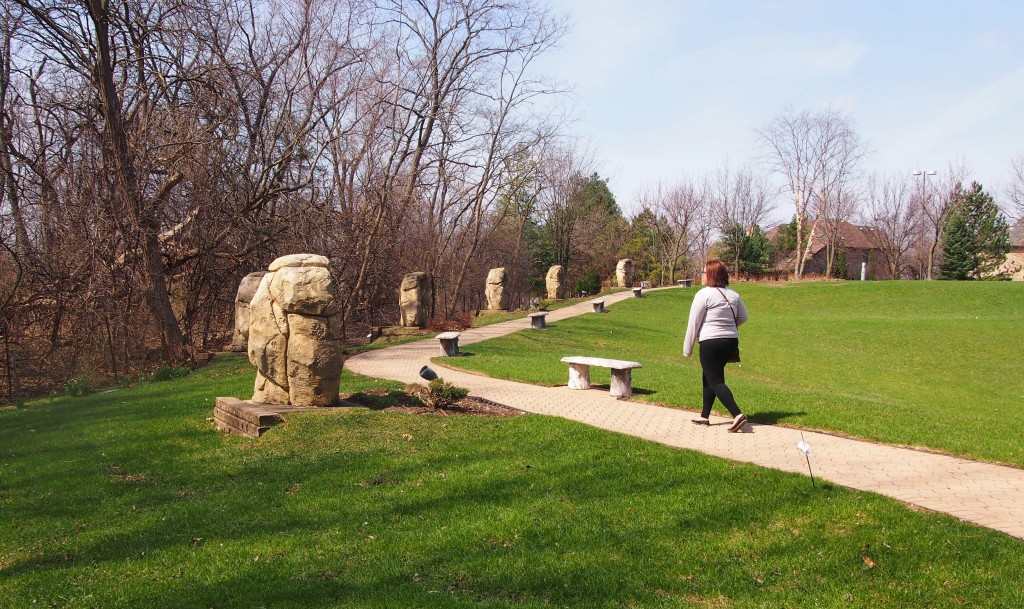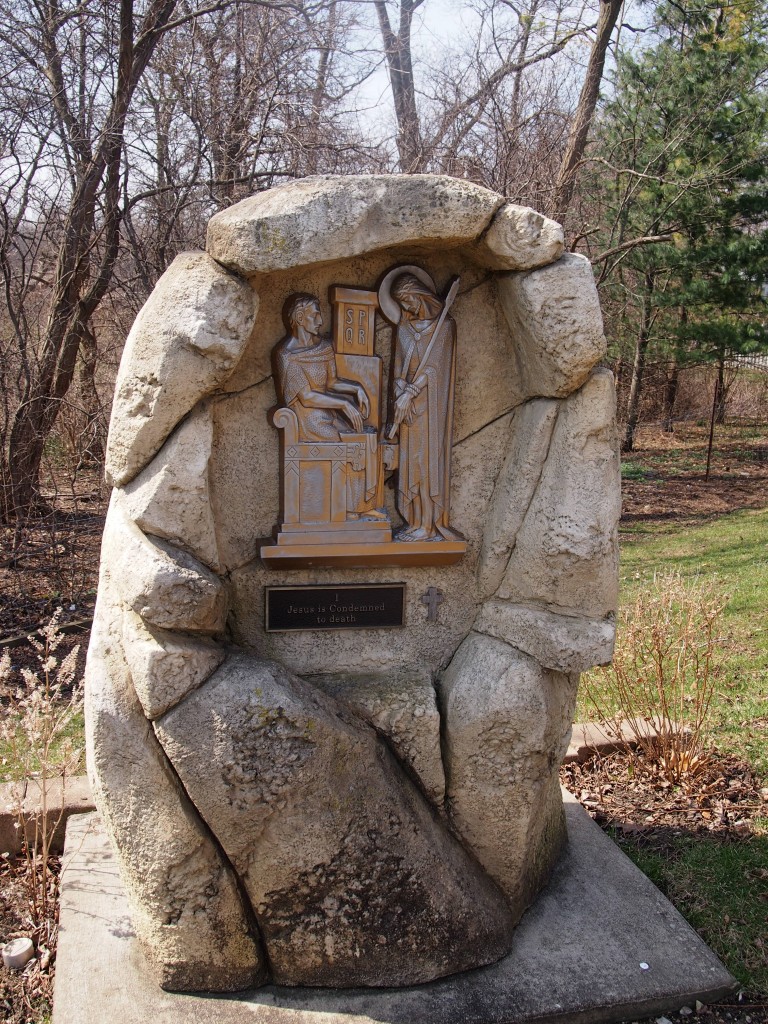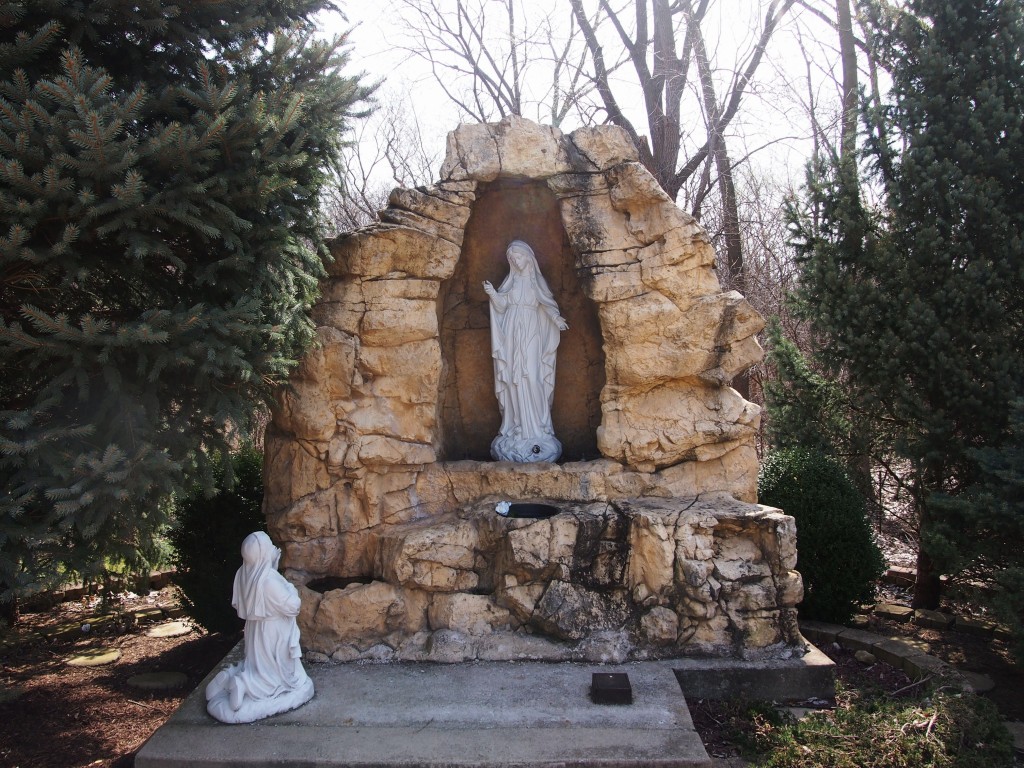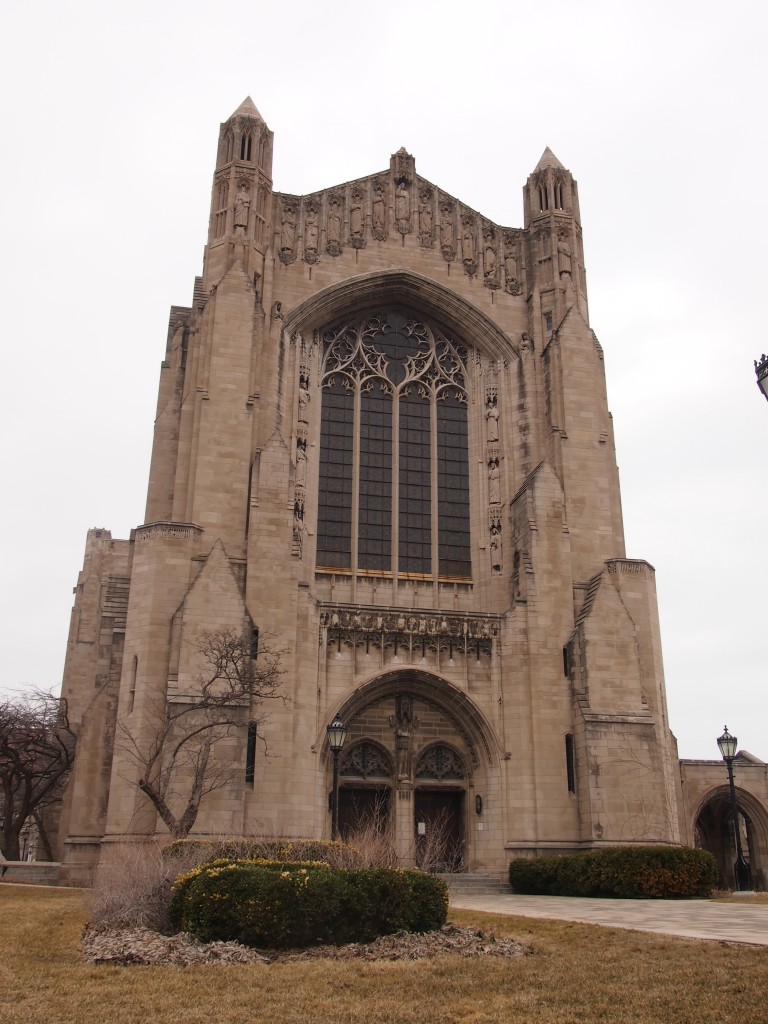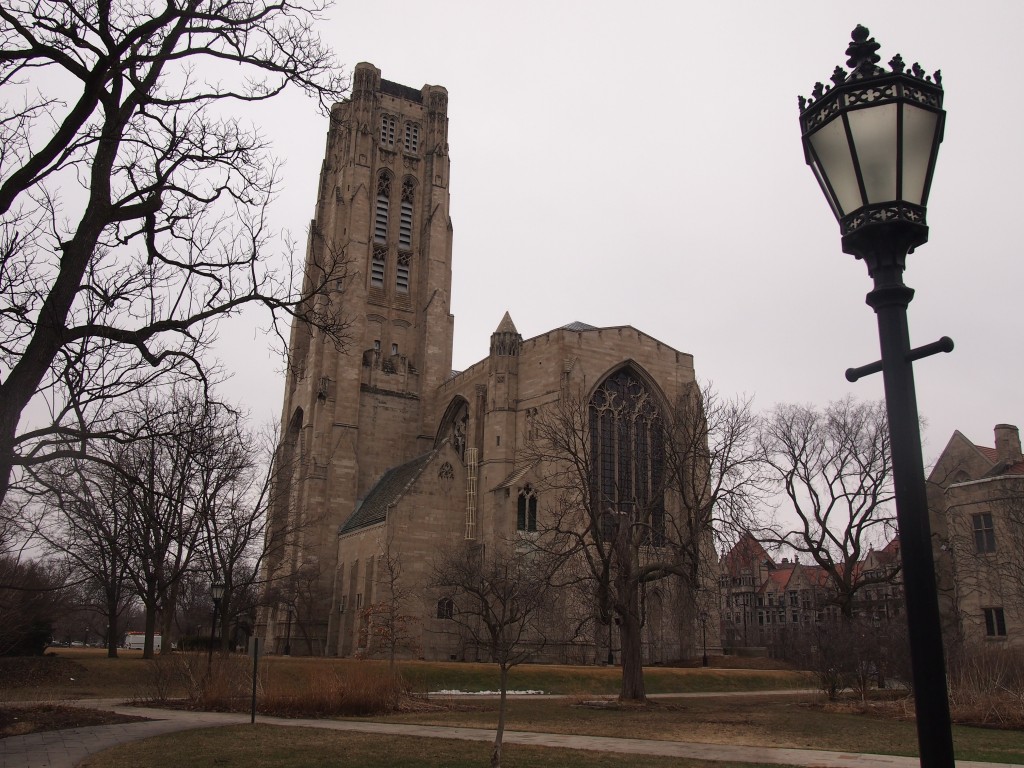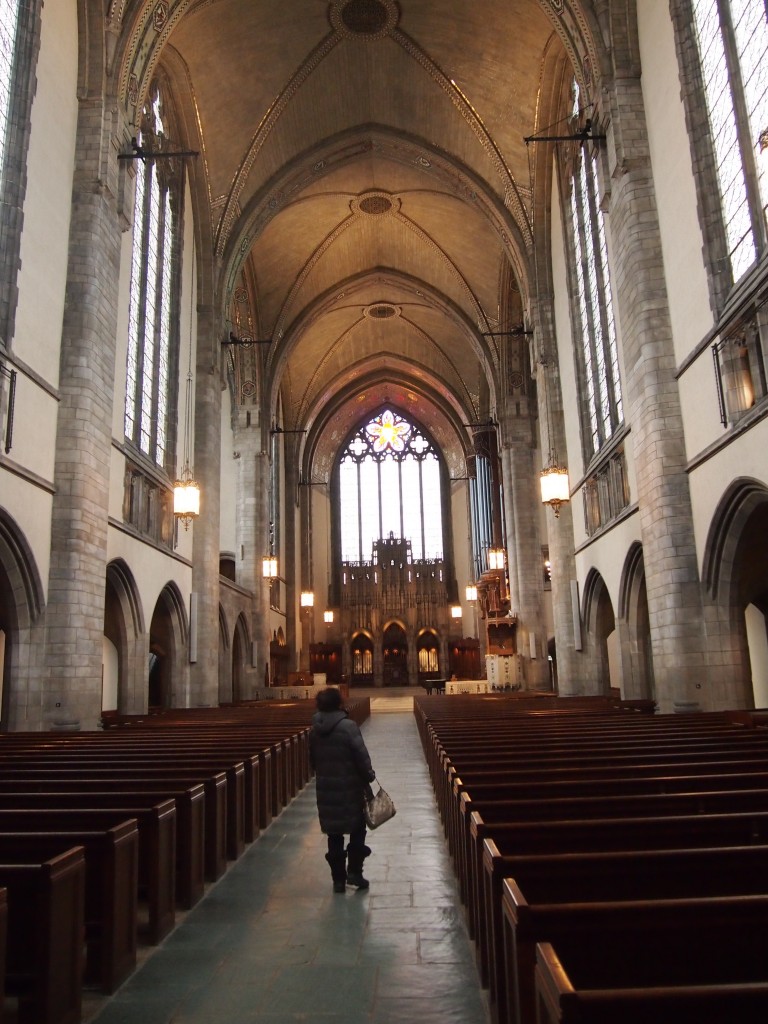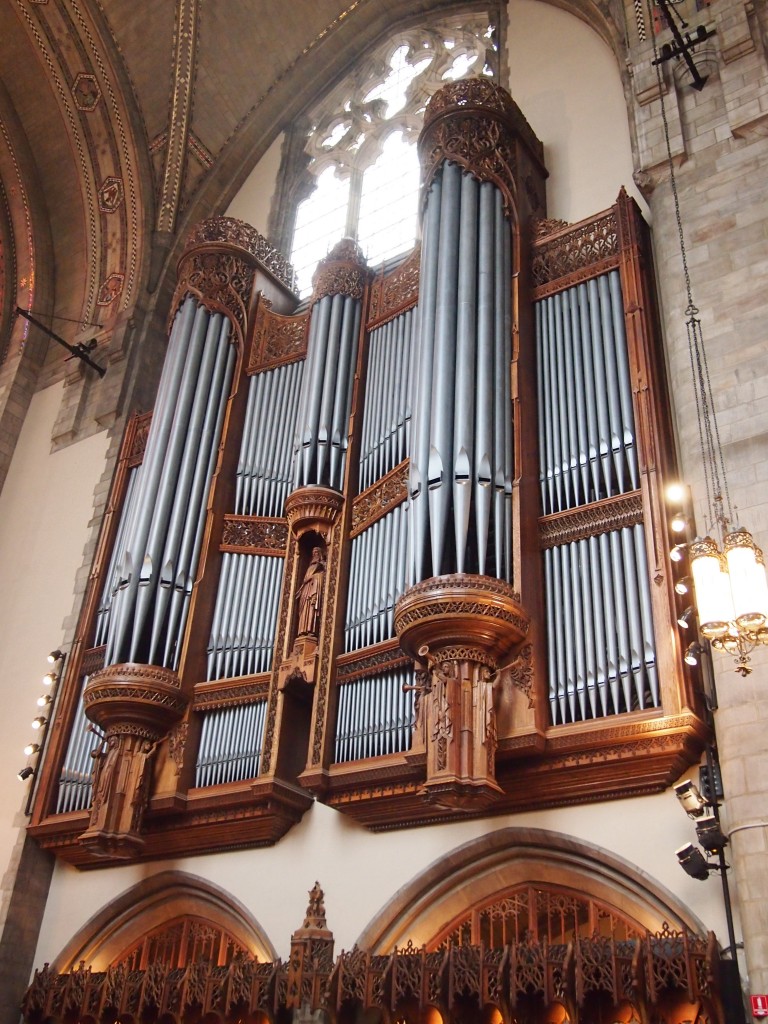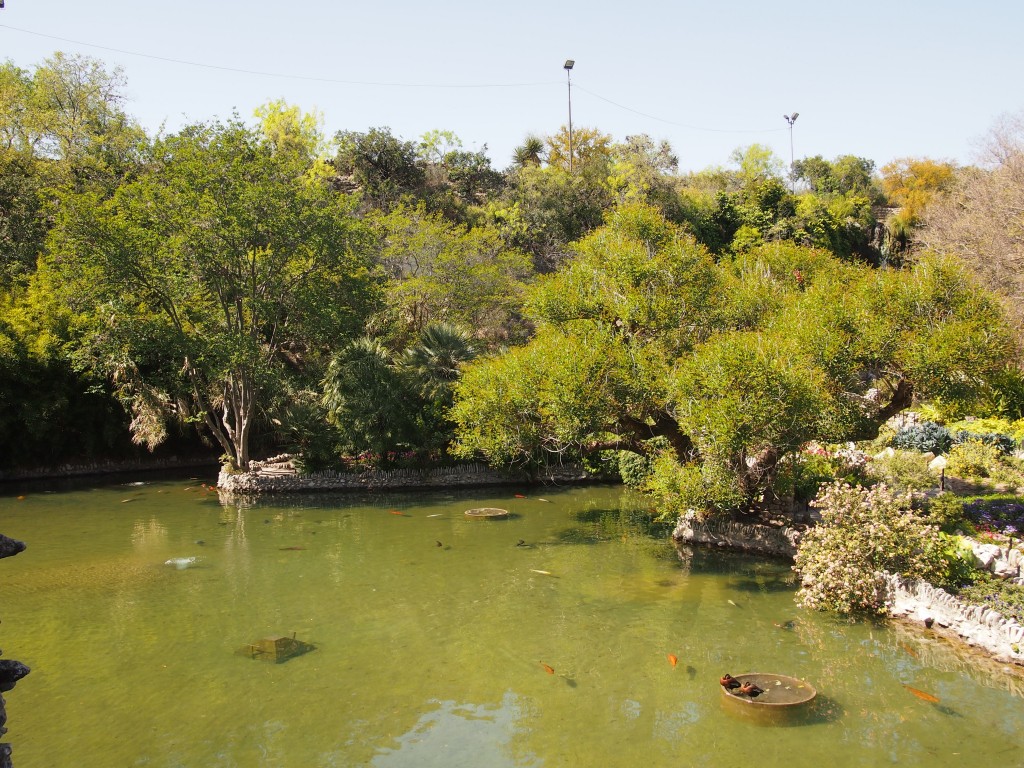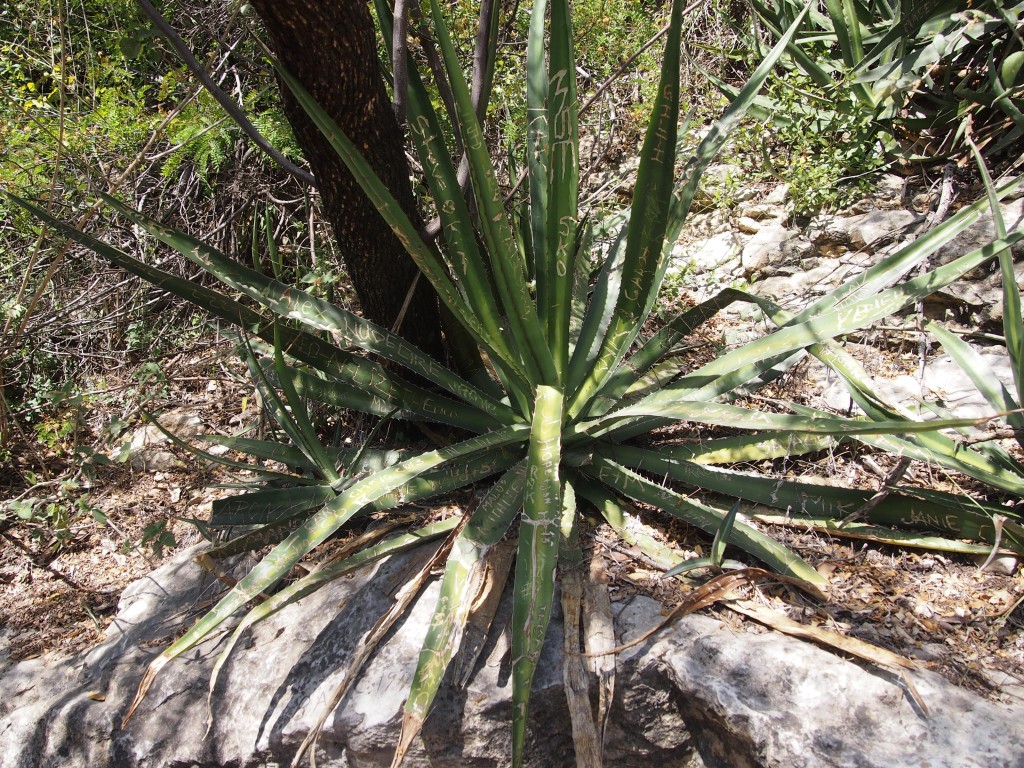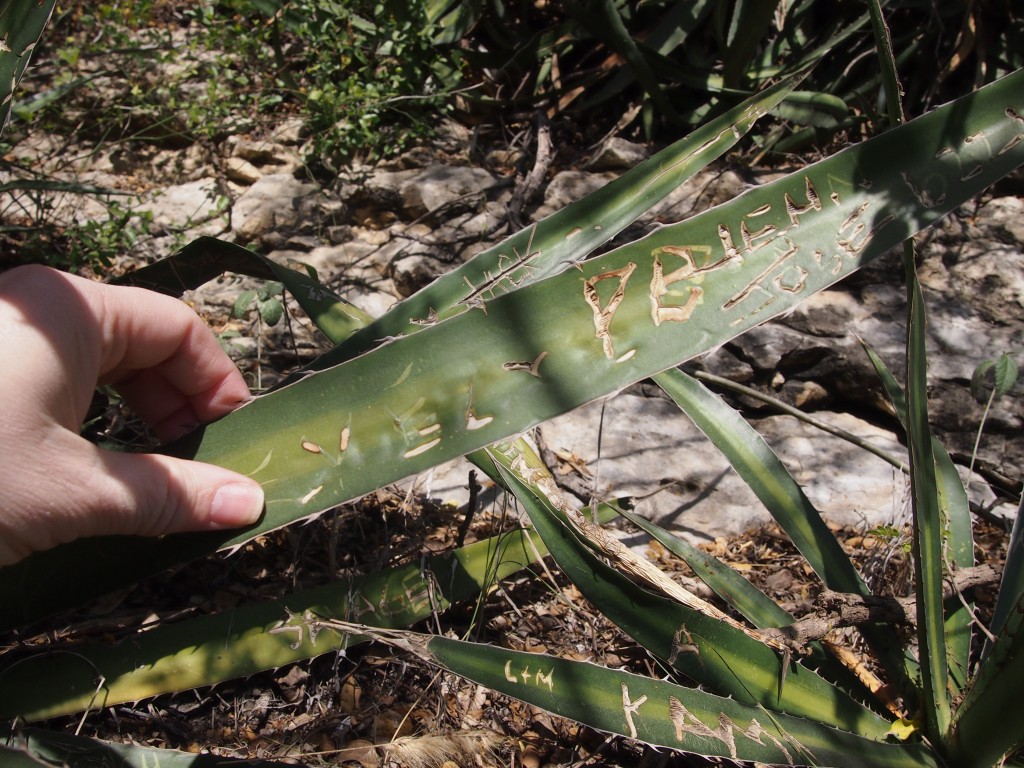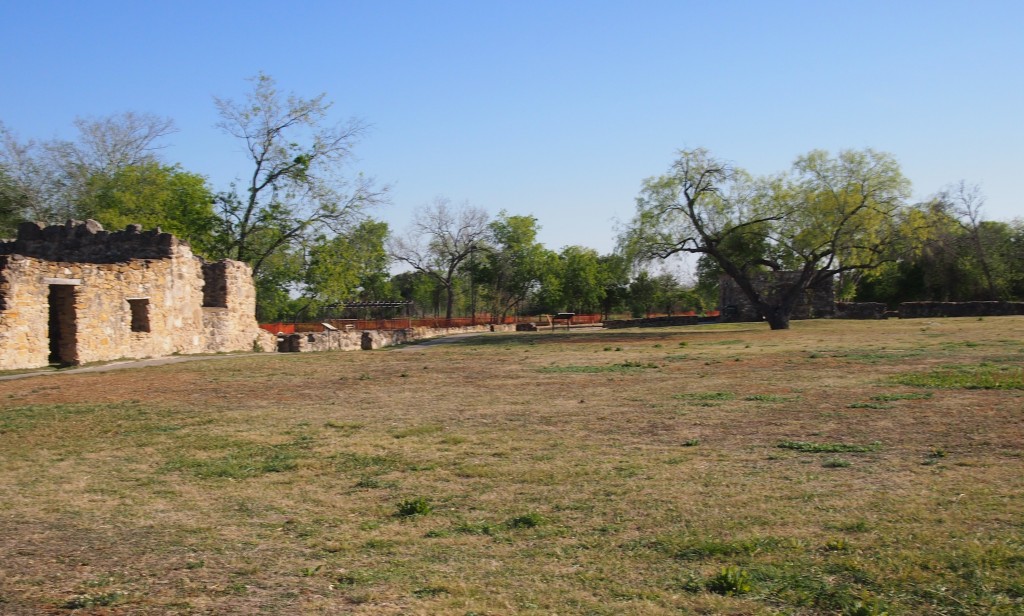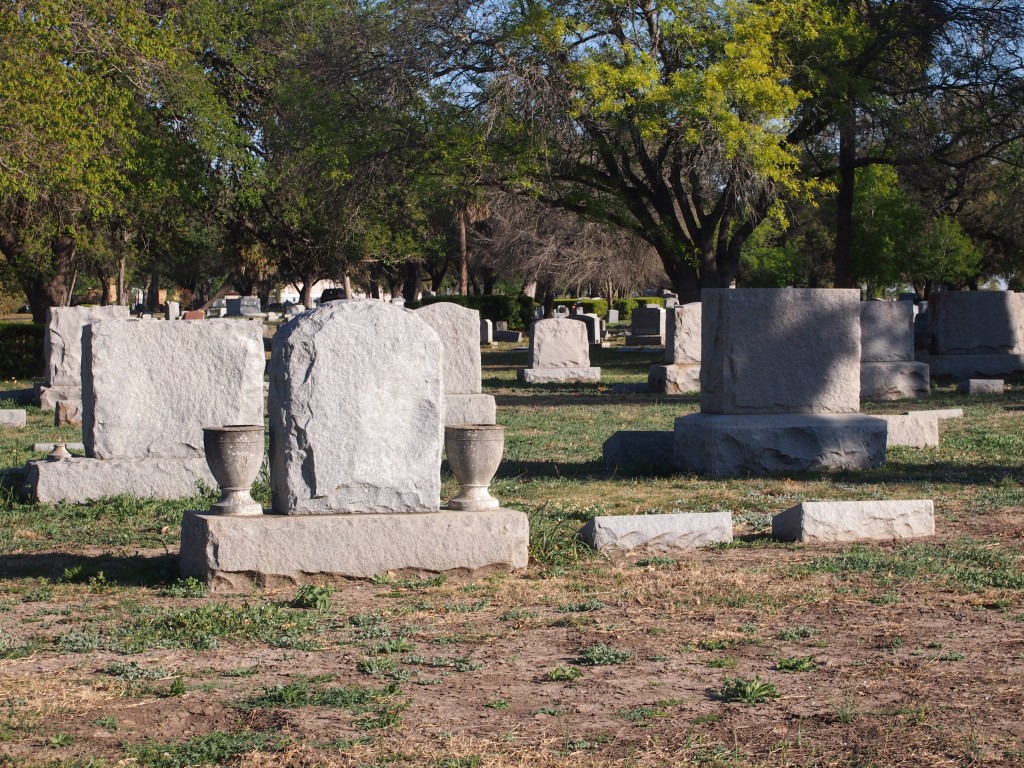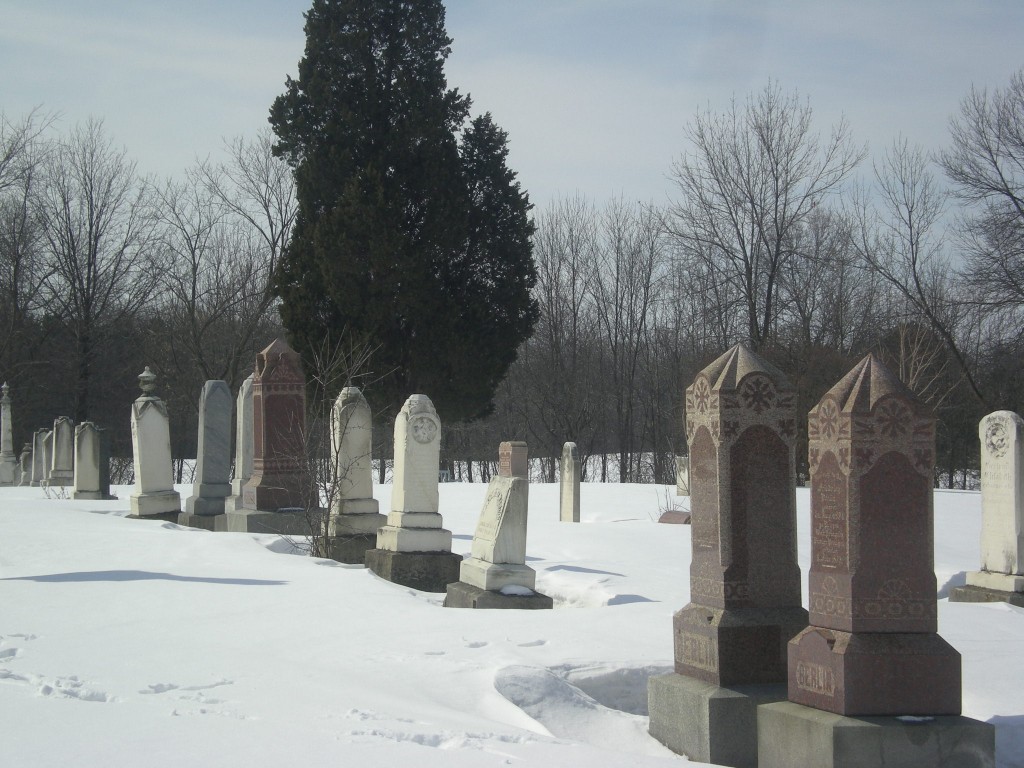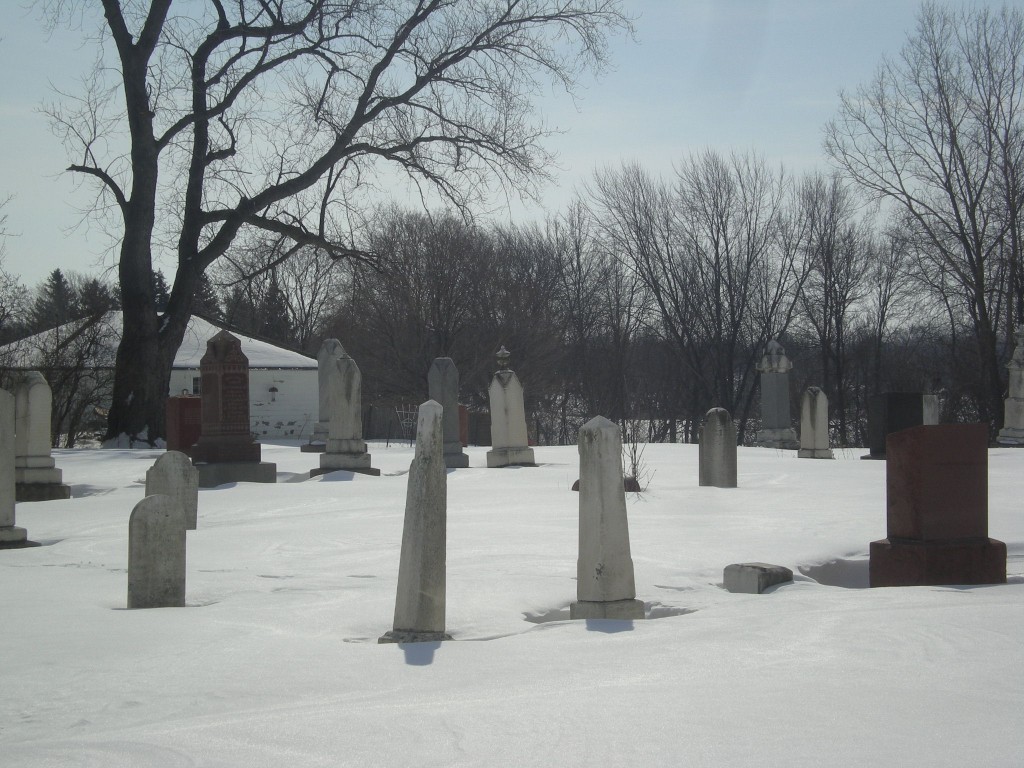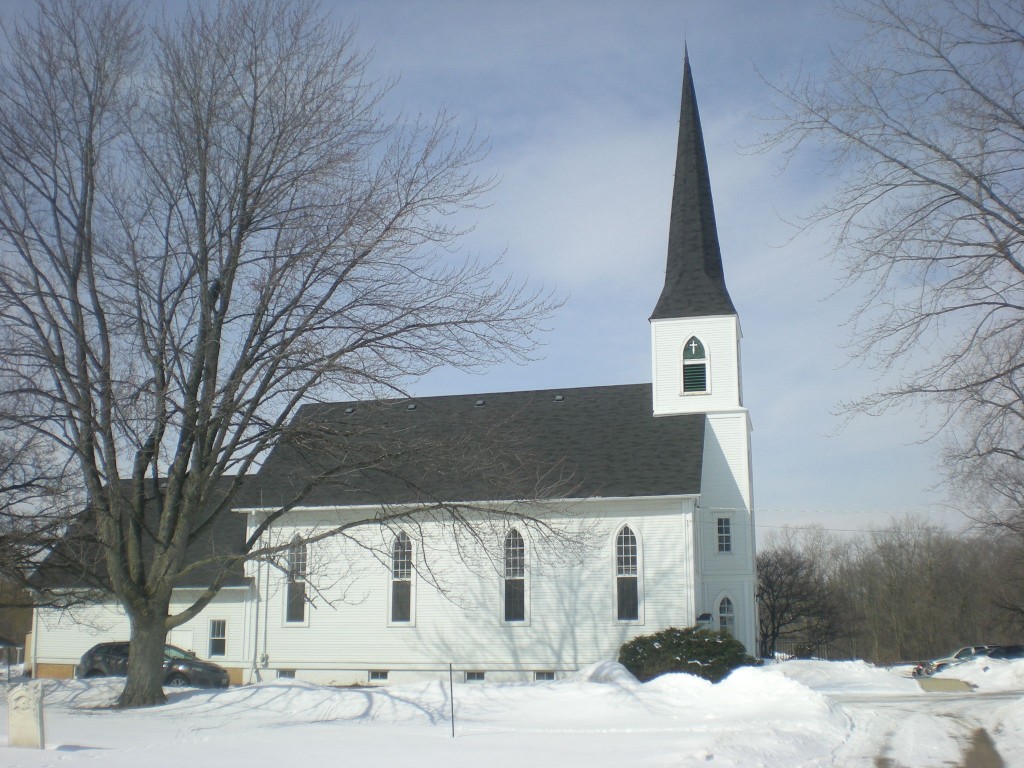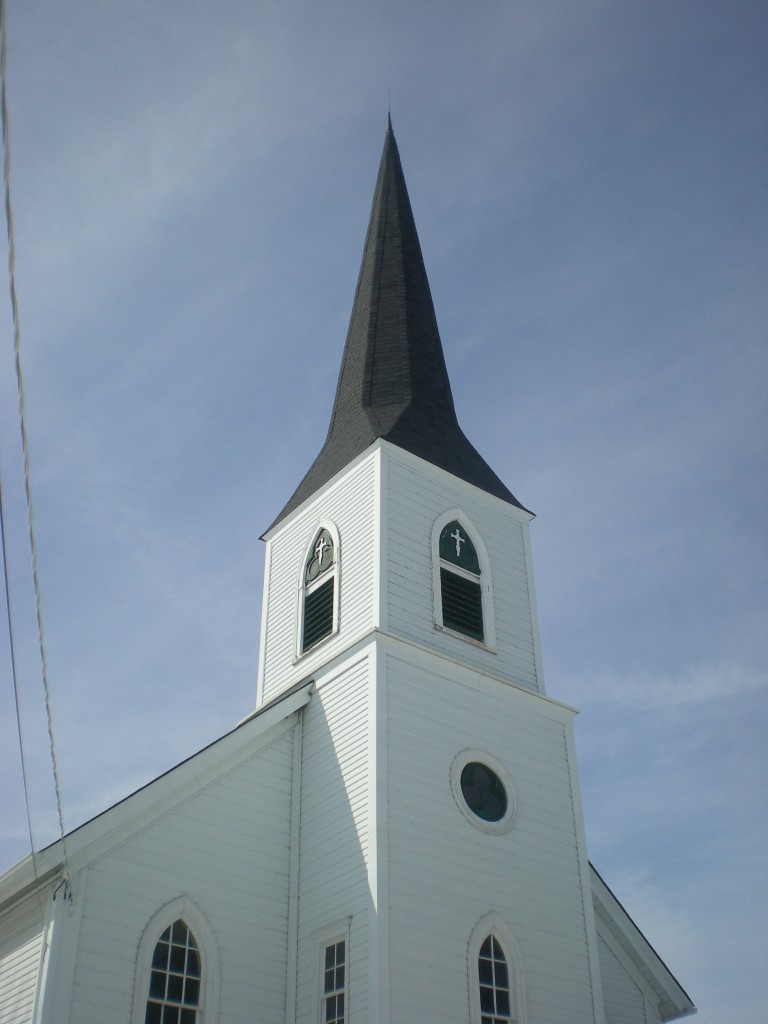When I lived in San Antonio, we often drove by Incarnate Word College. I don’t ever remember visiting except (I think) one of its auditoriums for a high school mock UN one Saturday in 1978. (I was an Iraqi delegate, and eventually the Arab nations got together and walked out in protest over something or other.) These days the school is the University of the Incarnate Word, and it’s bigger than I realized: nearly 9,200 students, which makes it the largest Catholic university in Texas and the fourth-largest private university in the state.
The main campus measures 154 acres, and includes the previously mentioned Blue Hole, mainspring of the headwaters of the San Antonio River. On the way to the Blue Hole, we passed the mansion of George Brackenridge, which he called Fernridge. Brackenridge, a late 19th-century San Antonio business magnate, eventually sold the house and some land to the Sisters of Charity of the Incarnate Word to found their school. (He also called the nearby area Alamo Heights, which he owned for a while, and donated the land for Brackenridge Park.) I assume the university uses it for events now.
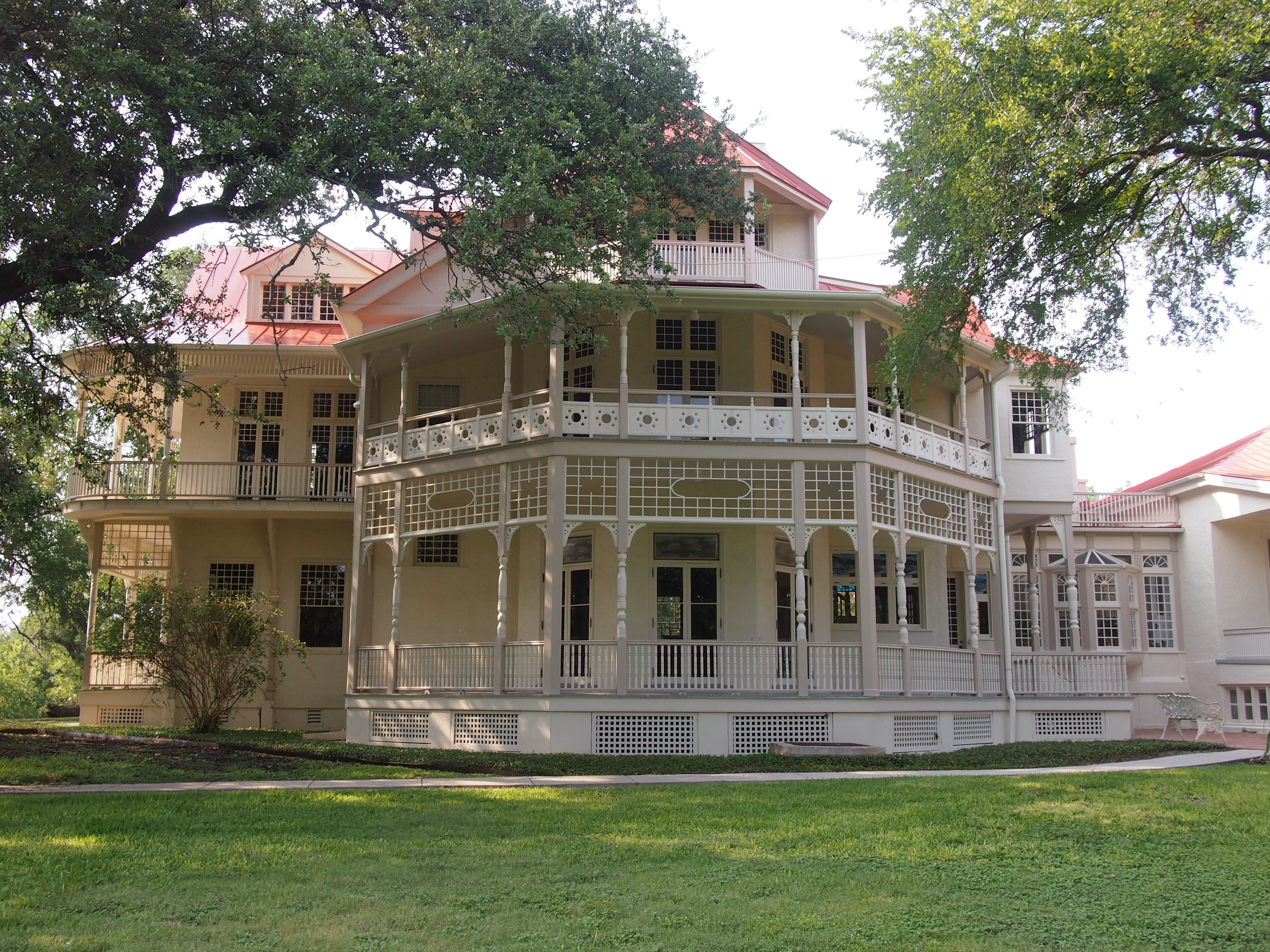 Not far away is a bronze nun. Not something you see every day. She seems to be in teaching mode, for the benefit of the young lady bronze. According to the plaque, the work is called “Living the CCVI Mission” and is by Paul Tadlock of New Braunfels. It was dedicated in 2006.
Not far away is a bronze nun. Not something you see every day. She seems to be in teaching mode, for the benefit of the young lady bronze. According to the plaque, the work is called “Living the CCVI Mission” and is by Paul Tadlock of New Braunfels. It was dedicated in 2006.
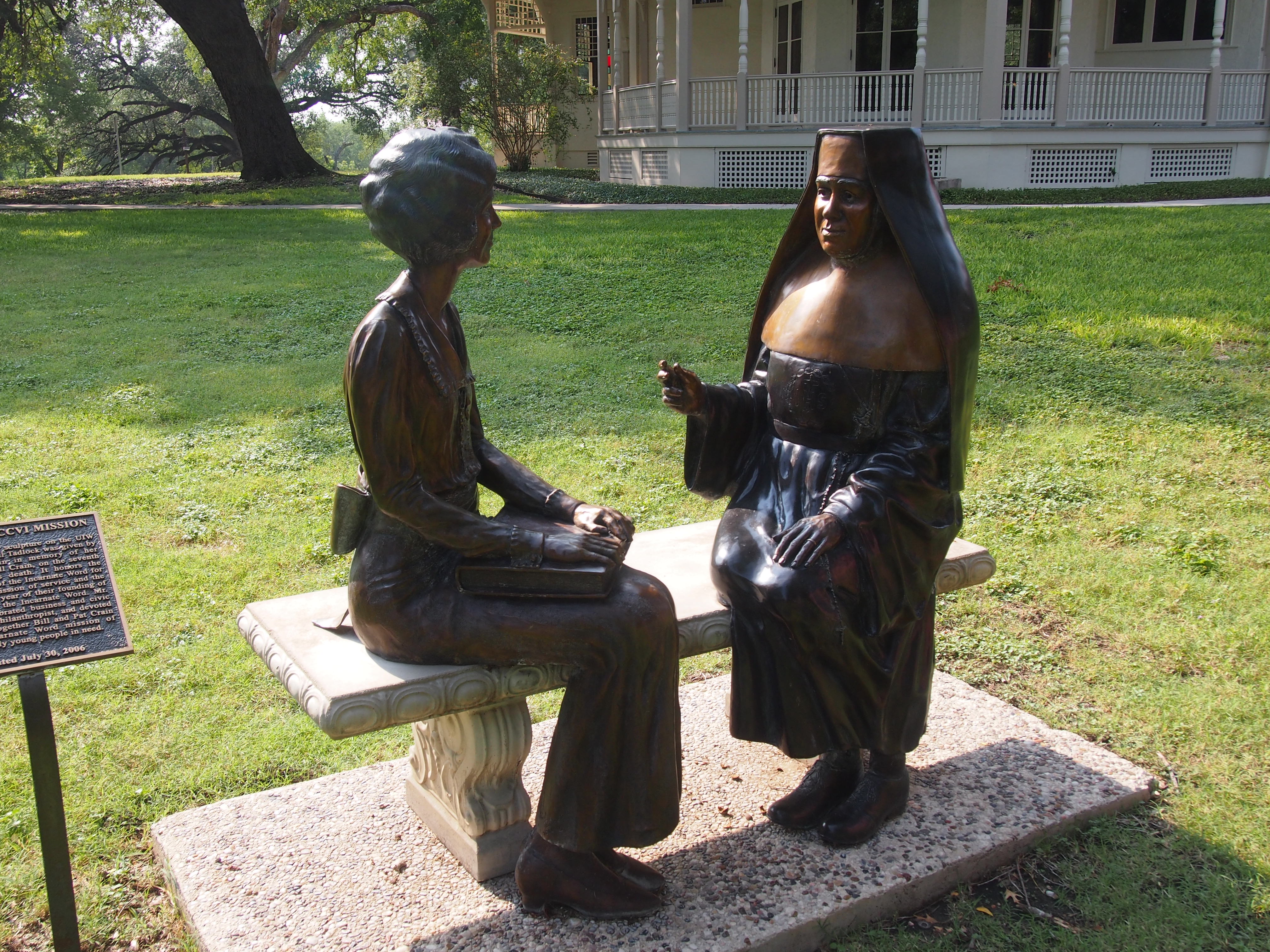 A little further into campus is a grotto. I seem to be running across a fair number of grottos lately. The Incarnate Word grotto is a Lourdes-class grotto, built in 1904 by Fr. J.G. Bednarek, a priest from Chicago, to mark the 50th anniversary of the promulgation of the dogma of the Immaculate Conception of the Virgin Mary. Apparently Fr. Bednarek taught at the school, but why he took an interest in building a replica of Lourdes there, I haven’t uncovered yet.
A little further into campus is a grotto. I seem to be running across a fair number of grottos lately. The Incarnate Word grotto is a Lourdes-class grotto, built in 1904 by Fr. J.G. Bednarek, a priest from Chicago, to mark the 50th anniversary of the promulgation of the dogma of the Immaculate Conception of the Virgin Mary. Apparently Fr. Bednarek taught at the school, but why he took an interest in building a replica of Lourdes there, I haven’t uncovered yet.
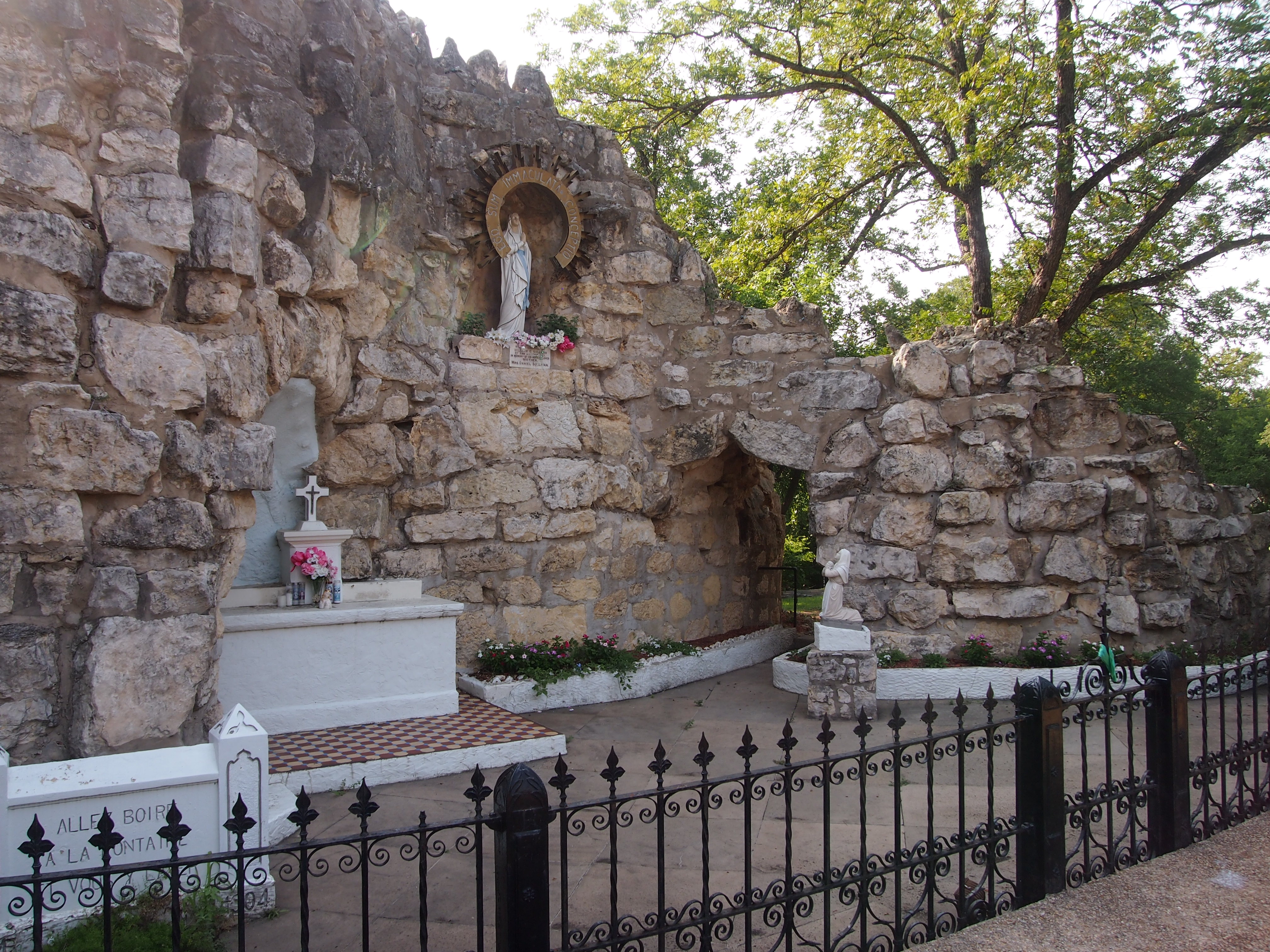 Finally, there’s the first bridge over the San Antonio River, which is just south of the Blue Hole. The river’s pretty small at that point, where Olmos Creek joins the outflow from the Blue Hole. A rivulet in a ditch, really, but nice and leafy this time of year. Nearby is the 53-acre Headwaters Sanctuary. The sanctuary is the last remaining undeveloped property from the original 283-acres the sisters bought from George Brackenridge.
Finally, there’s the first bridge over the San Antonio River, which is just south of the Blue Hole. The river’s pretty small at that point, where Olmos Creek joins the outflow from the Blue Hole. A rivulet in a ditch, really, but nice and leafy this time of year. Nearby is the 53-acre Headwaters Sanctuary. The sanctuary is the last remaining undeveloped property from the original 283-acres the sisters bought from George Brackenridge.
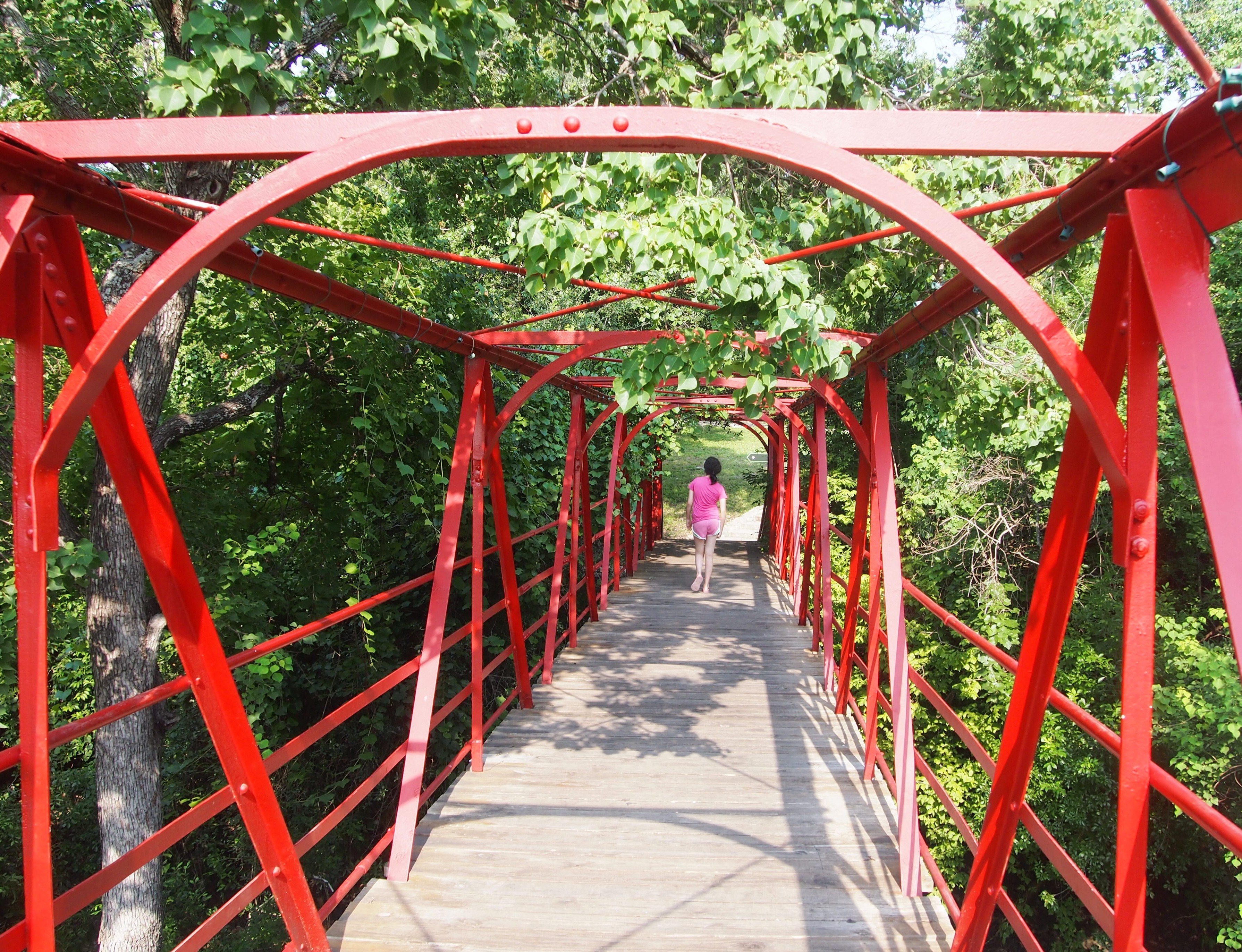 We decided it was too hot to walk on the sanctuary, which was still further. But since we’d come to the bridge, the thing to do was cross it.
We decided it was too hot to walk on the sanctuary, which was still further. But since we’d come to the bridge, the thing to do was cross it.
